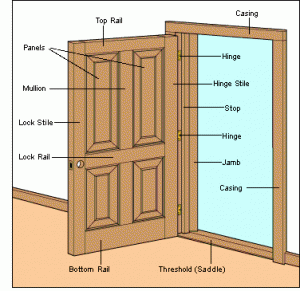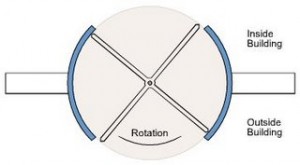UPDATE: The Leg Kick: Your Ultimate Guide to Using The Leg Kick for Mixed Martial Arts is now available! Click the link to get the book or click this picture:

Here’s the next part of “How to do a leg kick”. If you haven’t already, check out part One, Two and Three. In this part, I’m gonna talk about using the hips for this shin kick.
The main difference between the leg kick and the roundhouse kick is the use of the hips. I’ll use a generalization here and say that in many karate styles, the power comes to a large extent from snapping the knee (I’m just making a point to illustrate something, don’t get upset). In the leg kick, as seen in muay Thai and MMA, that’s not the case: the hips do the work. If you don’t turn them correctly, the kick loses power. I’ll cover a couple of ways to use the hips for the shin kick below but first, here are a few things general guidelines:
- Don’t chamber the knee as you launch the kick. This forces you to snap the lower leg and takes away the sledgehammer effect a proper shin kick has.
- The hips move first. Start turning your hips and let your striking leg follow. If you do the opposite, it becomes very hard to get power in the kick.
- Use the hips to retract the leg. Right after your kick lands, turn the hips in the opposite direction to retract your striking leg. If you don’t use the hips, you can still retract the leg but it will move a lot slower and leave you open to counters.
Half hip turn:
- Take a step forward and a wee little bit to the side, pointing your foot pretty much toward your opponent
- Turn your hip forward to get your leg moving but do NOT pivot on the support foot. That leg has to stay stationary or your hips will turn too much.
- Let your shin slam into the other guy’s thigh and not through it.
- Retract right after that.
Check out Masato’s leg kicks in this clip:
There are a couple of them at 1.15 to 2min. You also get a few slow motion repeats.
A few key points on how to do this kick:
Think of it as a hinge-like motion. Take a look at the picture below.

It has a stationary part (the jamb) and a moving part (the door). These two are connected by the hinge. The jamb doesn’t move, it’s a support structure for the door to hang on the hinges. The door does only two things; it opens and closes. And it can only close so far, once it moves into the casing, the door slams shut. This last bit is the crucial part.
Using this image for the kick:
- Your support leg is the jamb.
- Your right hip is the hinge.
- Your leg is the door.
- The other guy’s leg is the casing
Some more pointers:
- Speed is key. You can kick a lot faster with the half-hip than with the full hip turn.
- Don’t try to kick through his leg but try to kick into it. The “door” closes shut; it doesn’t blast through the casing.
- The kick won’t do major damage because of that. Use it in combination with other techniques, to surprise your opponent or when his leg’s already injured by full power kicks.
- Usually, a slightly upward kicking angle works best here. This angle also allows you to retract the leg real fast.
Full hip turn:
- Take a step forward and a bit more to the side than in the previous version.
- Turn your hip to start moving your leg.
- This time, pivot on the ball of the support foot so your hips can turn a lot further forward.
- Dig your shin into the opponent’s thigh but now, try to power through as if you want to chop his leg in half.
- As soon as you feel your leg stalling, reverse the hip turn to retract the leg.
Check out this clip of Ramon Dekkers schooling Hector Pena on leg kicks.
You can watch the whole first round to see a number of full hip turn kicks. Or skip to around 9 min. to see the finisher. ‘Nuff said.
Think of this kick as a revolving door.

It has a vertical axis around which it rotates. The doors spin 360° around it. Now imagine the vertical axis has a motor powering it so it rotates and there’s only one door instead of four. Then some smart guy steps in at the wrong time, puts his leg in there and the door crashes into it.
- Your support leg is the vertical axis.
- Your hips are the motor.
- Your shin is that one door.
- The smart guy’s leg is, well your poor, unfortunate opponent’s leg.
A few comments:
- Don’t stop turning your hips when your shin lands. Instead, try to accelerate and go through. The motor of the revolving door doesn’t slow down when it hits the guy’s leg and neither should you.
- Pivot on the ball of your support foot to do this. If you like, you can spin all the way so your heel points towards your opponent. That’s the maximum range of motion.
- Put the foot at an angle if you don’t like to pivot as far. Not every fighter likes to turn all the way in like this. A compromise is to put your lead foot with the toes pointing away from your opponent. This lets you rotate your hips almost completely without pivoting 100%.
- Do both, one after the other. Check out the slo-mo of Ramon’s kick at 9.40min. He steps in with the toes pointing to the side, starts to kick and then pivots a little on his support foot for extra power.
These two ways of using your hips are not mutually exclusive: they represent opposite sides of the range of possibilities. There are many steps in between before you go from one to the other. It’s up to you to train and experiment to see what works best for you.
That’s it for part Four in this “How to do a leg kick?” guide. The next part covers the legs. I’ll put it on line next week at the latest.
Again, feel free to leave some comments in here. Or better yet, if you’re using this guide in your own training, share your experience with the rest of us.


Leave a Reply